by Katy Orell
While visiting home in the United States a few years ago, my family and I went swimming at the local pool on a scorching summer’s day. When we arrived back to my parent’s house a couple of hours later, we found things out of place, disorderly, rummaged through.
We had been robbed.
Not robbed of everything, but my mother soon found out that every piece of jewelry she ever owned had been stolen, everything but the two rings she wore on her fingers that day.
When I asked her if she was upset, she didn’t say “yes” or “no,” but rather told me the story of Cornelia Africana, a Roman woman of great societal importance and wealth who gave little consideration to her outward appearance. Cornelia was often questioned as to why she chose to dress in such a plain, unadorned way when she could easily afford elaborate jewels. As the story goes, Cornelia motioned to her two sons and explained, “These are my jewels.”
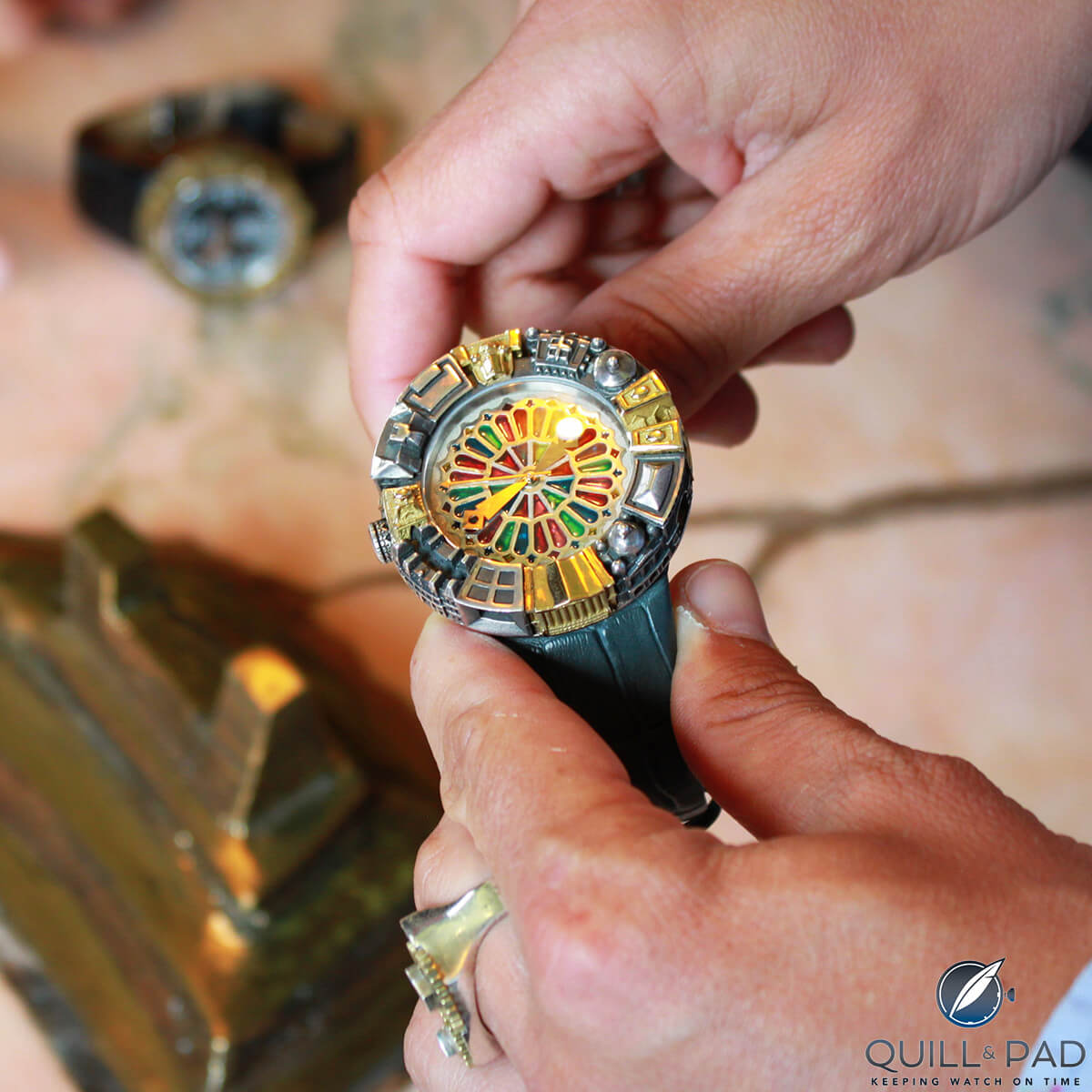
Tournaire bespoke watch with Paris skyline bezel
I was reminded of this story as I visited the atelier of French artisan jewelers, Philippe Tournaire and his son, Mathieu. The pieces they create – from bracelets and rings to watches and belt buckles and even headphones – are all made from something much more valuable than gold.
It all started with a fork in his mother’s basement
If you had told Philippe Tournaire 44 years ago that he would one day become a world-renowned jeweler with a boutique on Paris’ famed Place Vendôme, he would not have believed you. But 44 years ago, in 1973, curiosity got the better of the former television repairman.
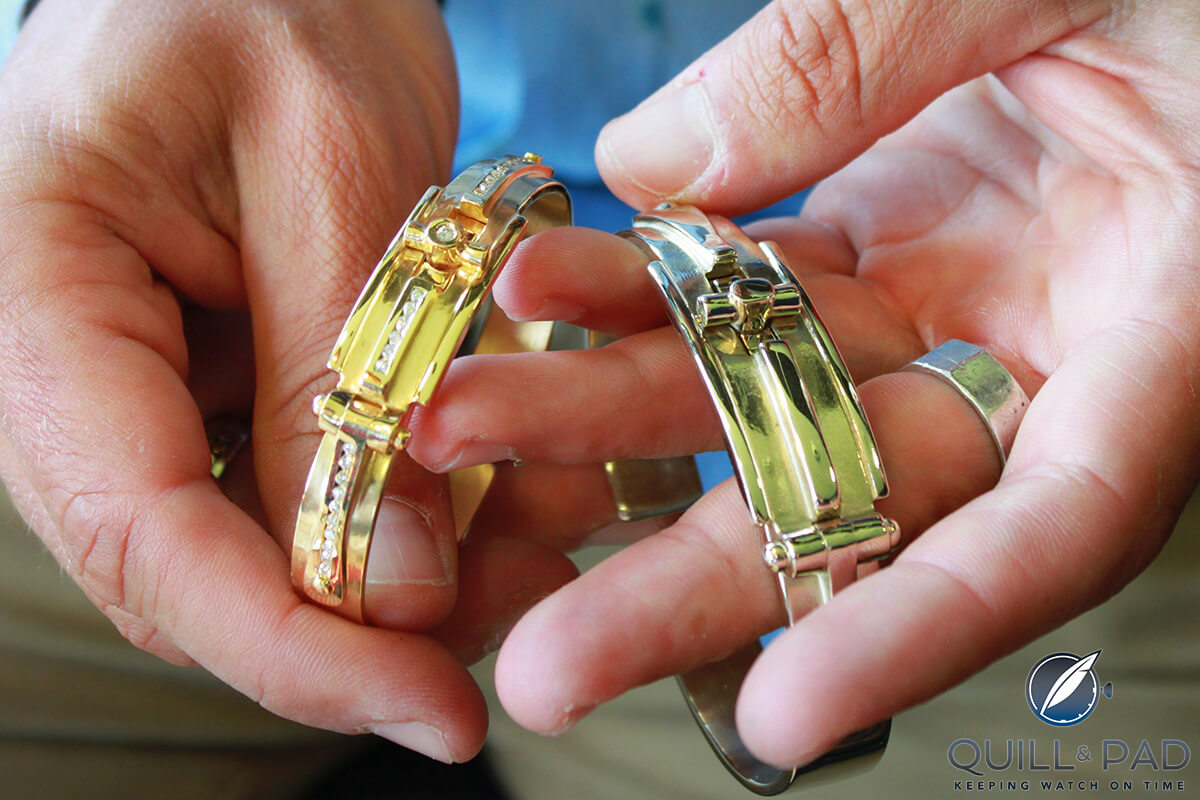
Gold bracelet’s from the Tournaire Free collection
Tournaire liked to make things with his hands. His tinkering began with pebbles and then evolved into molding copper scraps as little gifts for friends.
Metalworking proved an expensive hobby (as precious metals didn’t and don’t come cheap), so he began recycling silverware into jewelry.
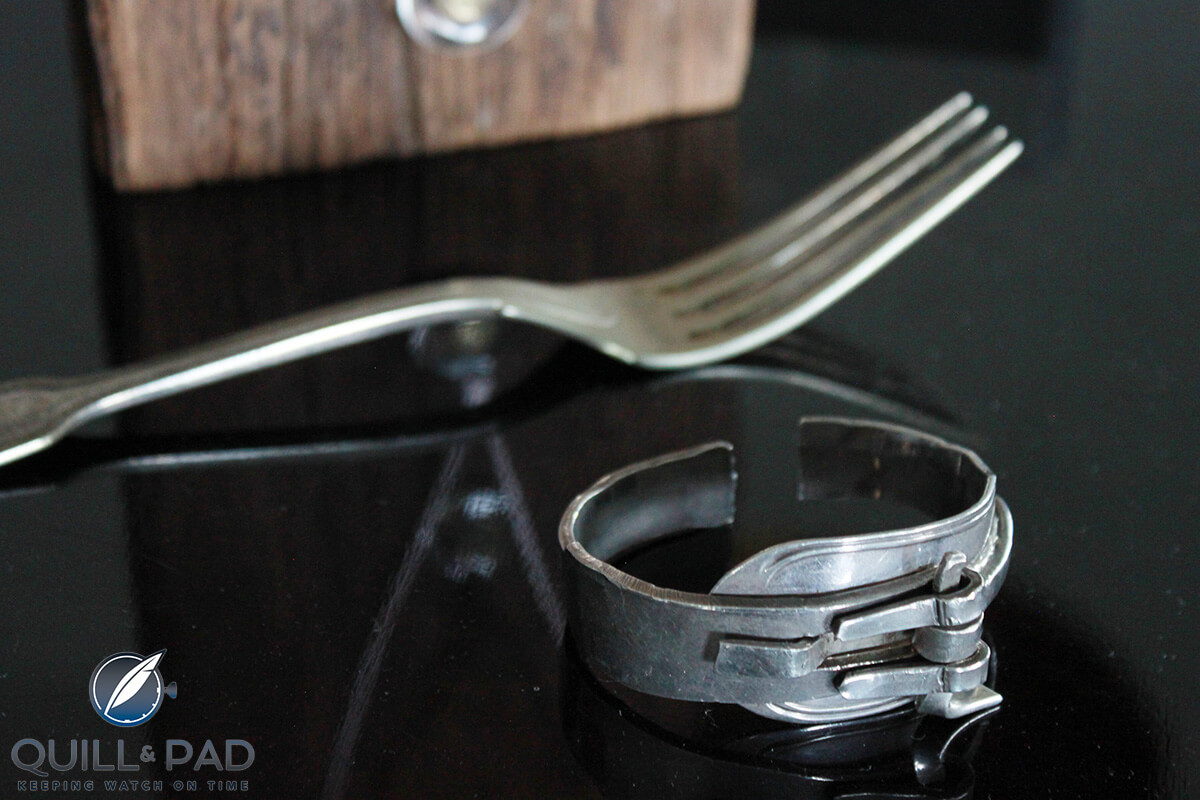
Fork bracelet by Tournaire
His first piece was a silver bracelet made from a fork with a clever clasp held together by a pin made out of one of the fork’s tines; this piece would launch Tournaire as a brand.
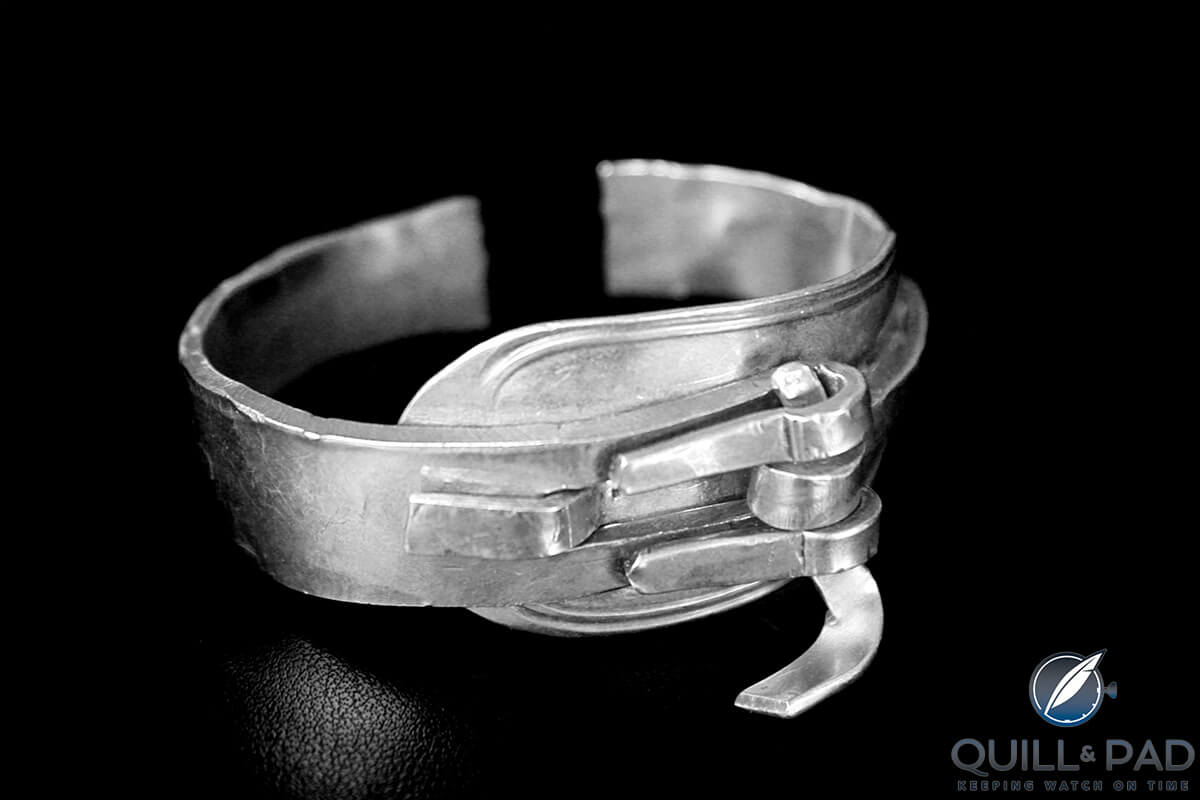
Fork bracelet by Tournaire
Philippe’s unique designs spread via word of mouth, and his business grew substantially; what started out as a hobby had now turned into a full-time job. He spent ten years working out of an “atelier” in his mother’s basement, but eventually he had to relocate to a more professional space in Montbrison, France.
This was where I briefly met the very soft-spoken Philippe Tournaire and his dashing young son Mathieu on a recent visit.
Past, present, future
With more than four decades as a jeweler under his belt, Philippe Tournaire has slowly begun to hand the reins over to his son, Mathieu, who has been steeped in jewelry fabrication since he was a young boy.
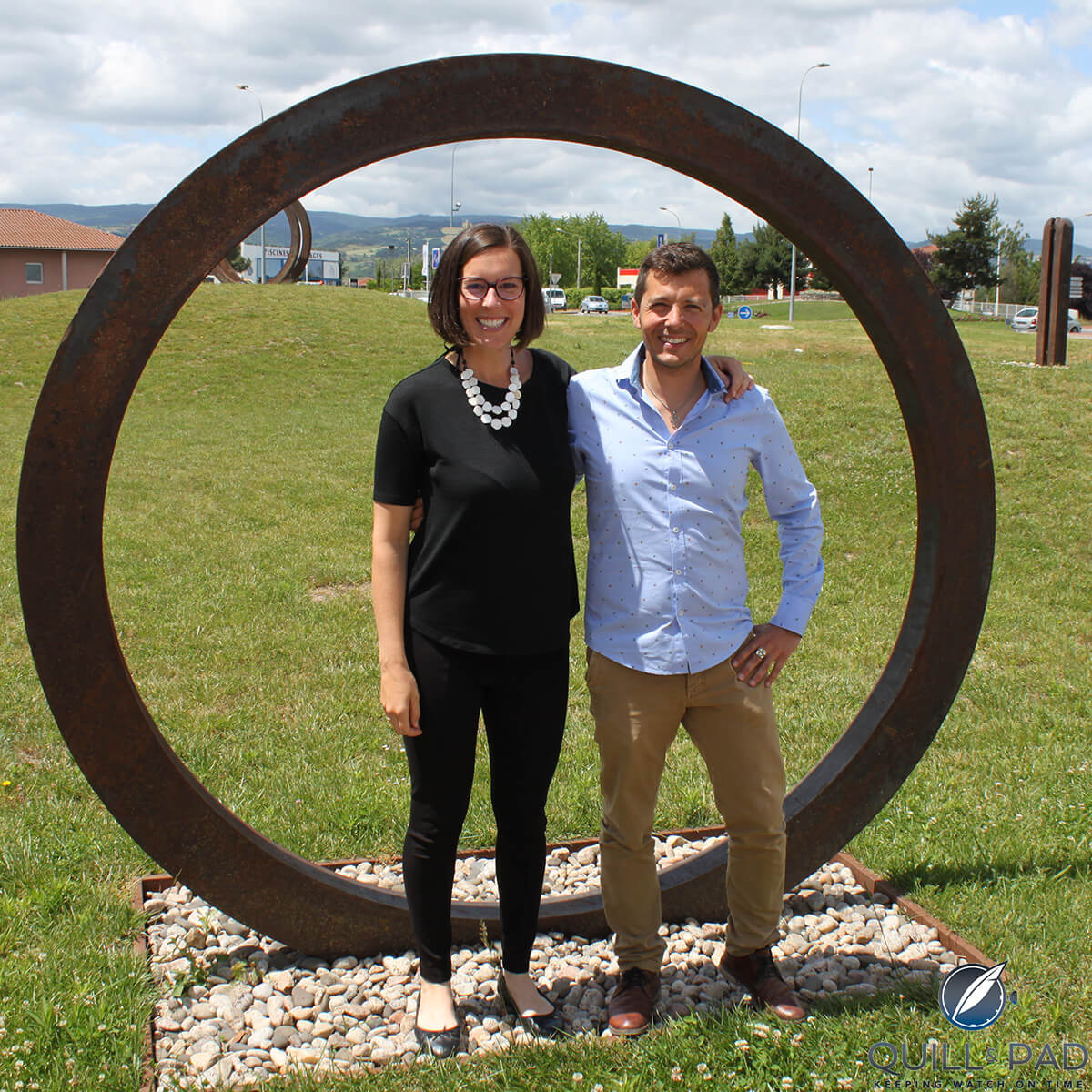
Katy Orwell with Mathieu Tournaire
But like his father, Mathieu never planned on becoming a jeweler. However, fate would eventually steer him back to the familiar workshops built by his father.
Both father and son enjoy traveling, and the expeditions they took greatly influenced their creations, all of which are imbibed with a certain symbolic meaning. As Philippe said, “The symbol is what gives meaning to life and changes reality.”
The Alchemy Collection, which is Tournaire’s most recognizable design, hinges upon three shapes: the square, the triangle, and the circle. While globetrotting, Philippe found these recurring forms in nearly every culture.
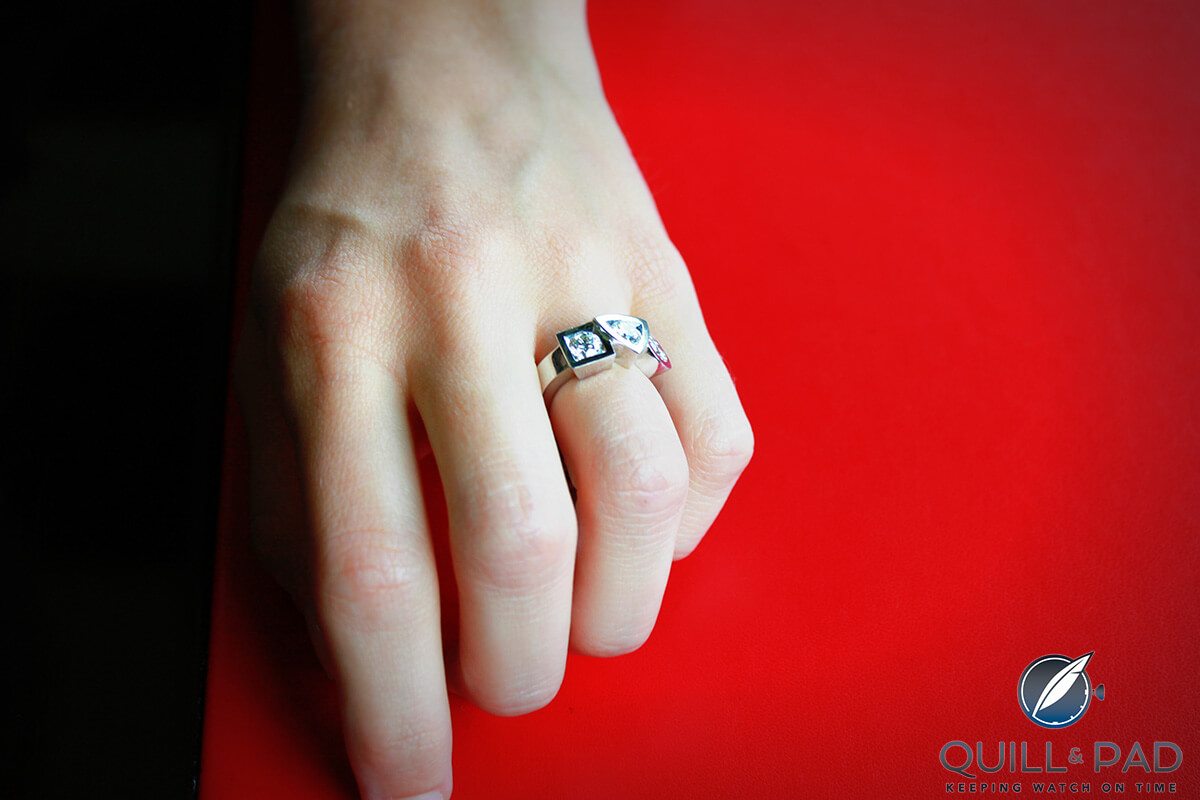
Ring from the Alchemy collection
For him, they represent, the past, present, and future with the passage of time slowly carving away at the sharp edges, much like water or wind erodes rock. The end result is something whole, circular, and, perhaps on a larger scale, the notion that life ends where it begins.
From ancient techniques to modern artistry
Maintaining ancient craftsmanship techniques while also keeping up with modern production demands is something Tournaire strives to keep in balance.
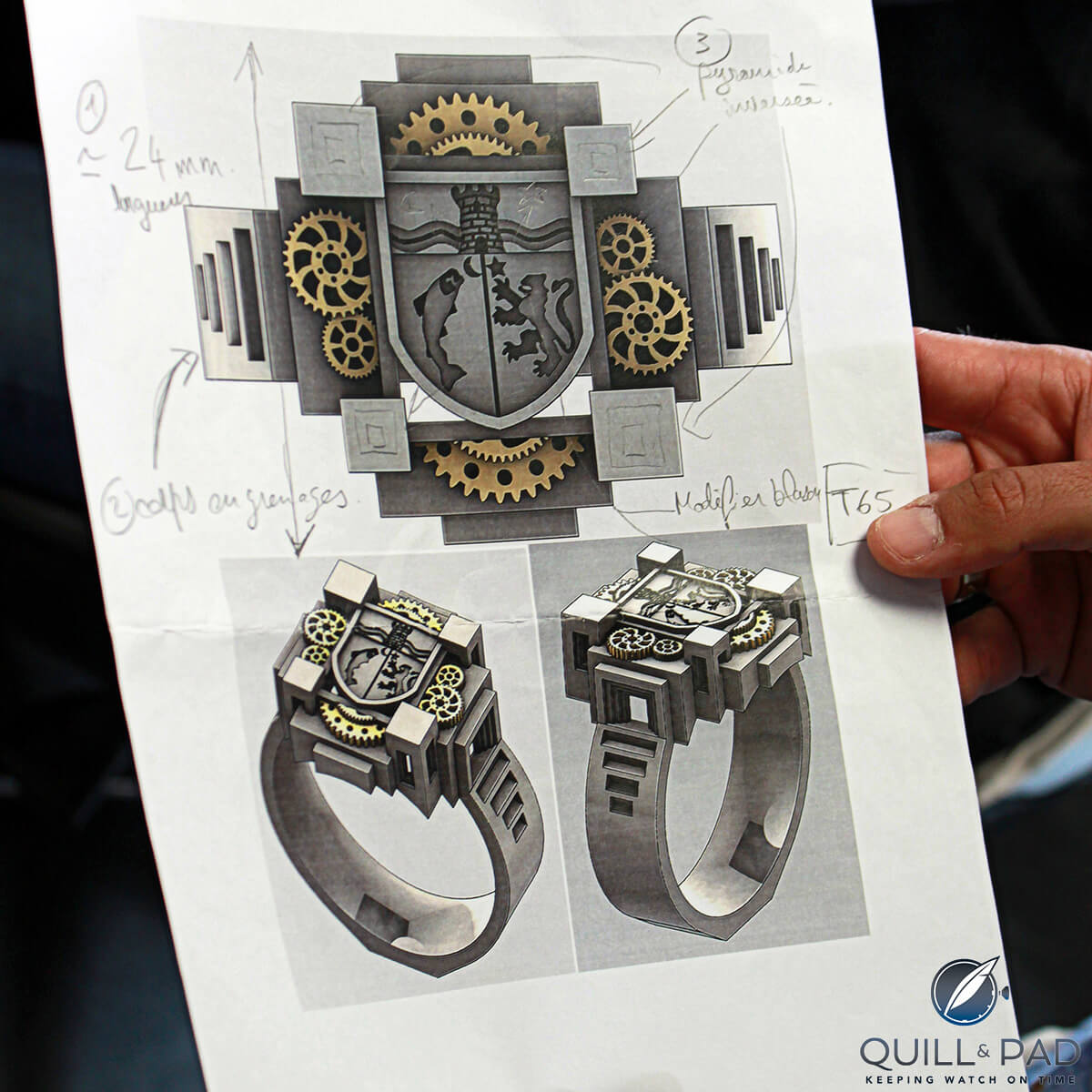
First the jewelry at Tournaire is designed on the computer
Mathieu was kind enough to weave us (a troop of four visitors) through a maze of computers where graphic artists were hard at work designing 3D models of Tournaire creations: these were either custom designs created in collaboration with clients or designs created by Mathieu or Philippe.
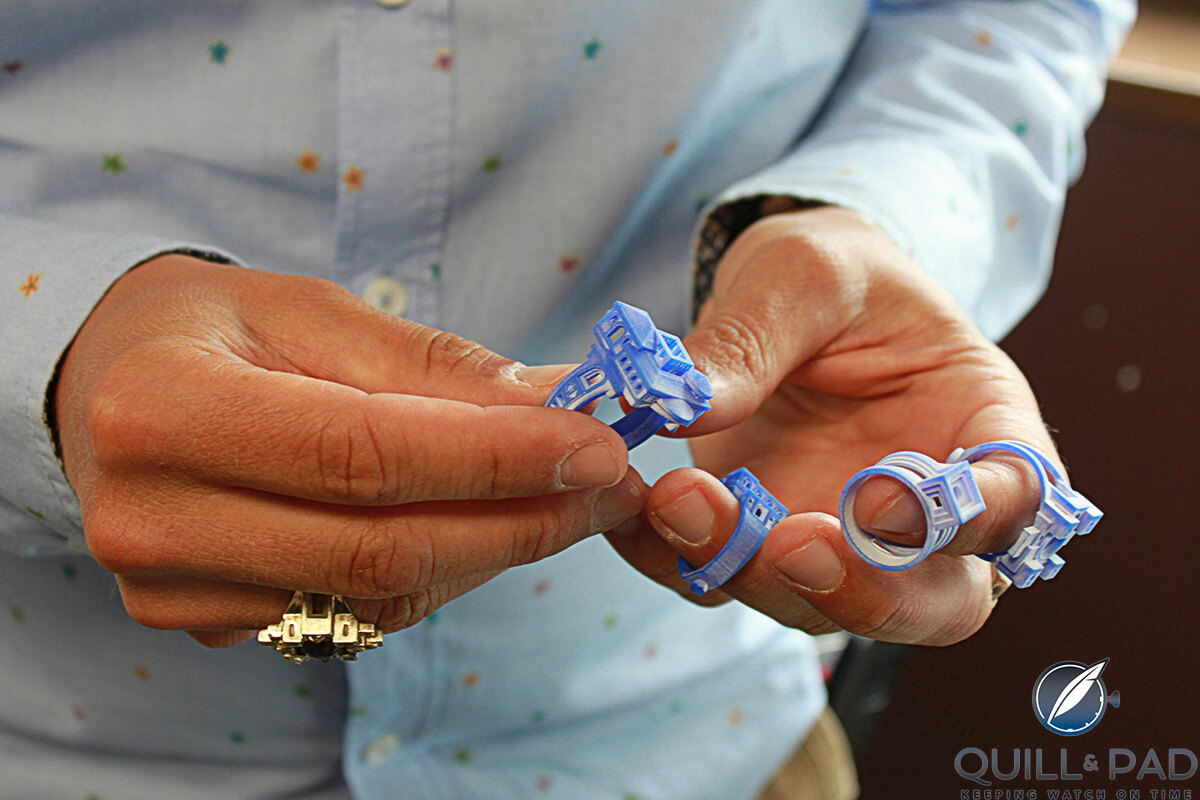
A 3D printer makes full sized models of the jewelry
These graphics could be printed into tangible, wax versions using a 3D printer. The next part is where ancient methods take over from the modern.
Using a process the French call “la fonte à cire perdue,” or lost-wax casting, the wax model is used to create a cast. By melting the wax out of the mould, a negative is left behind and replaced by molten metals. Once cooled, the end result is a rough piece ready for polishing.
Lost-wax casting technique at Tournaire in Paris
On the atelier’s ground floor, we saw several artisans ardently burnishing, sawing, shaping, and placing final touches on these recently cast pieces. Their hands finished things as simple as a white gold wedding band or as complicated as a watch bezel designed to look like a miniature version of Paris. Tournaire watches are powered by mechanical ETA movements, but the dial, bezel, and case are all made in-house and the timepieces are sold under the Tournaire brand name.
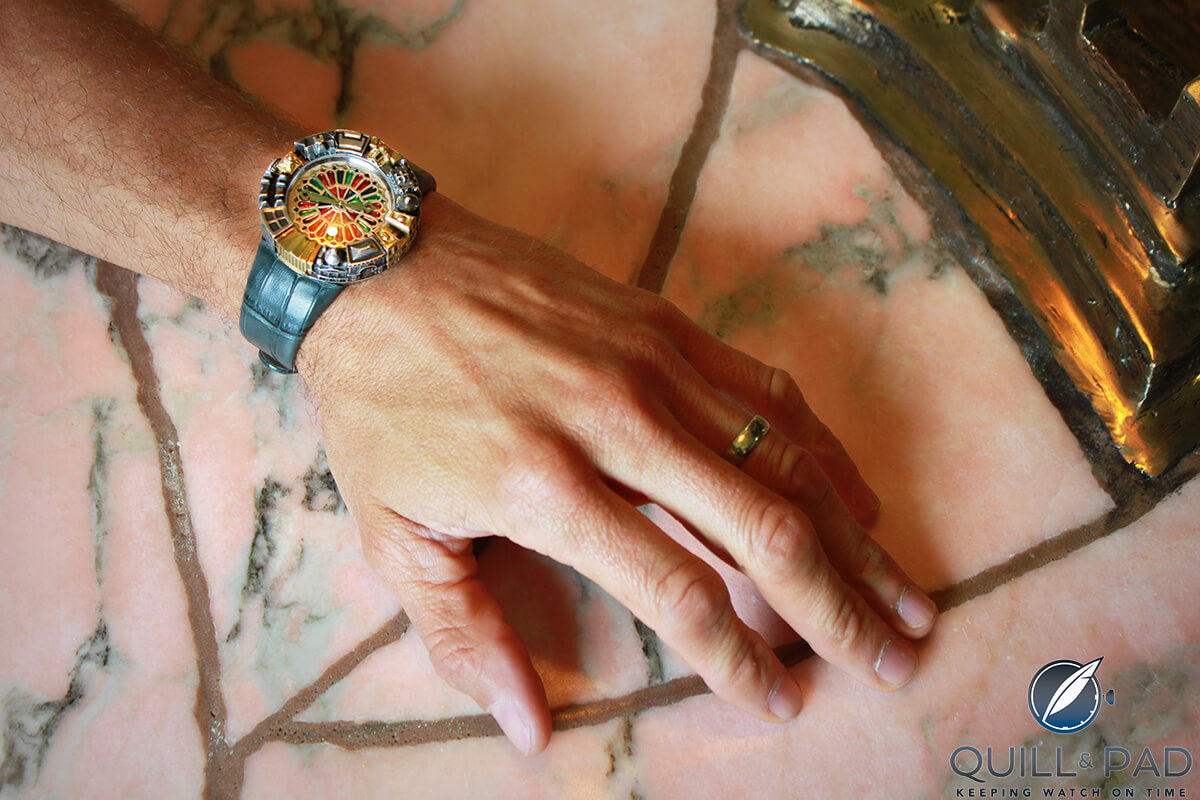
Tournaire bespoke watch
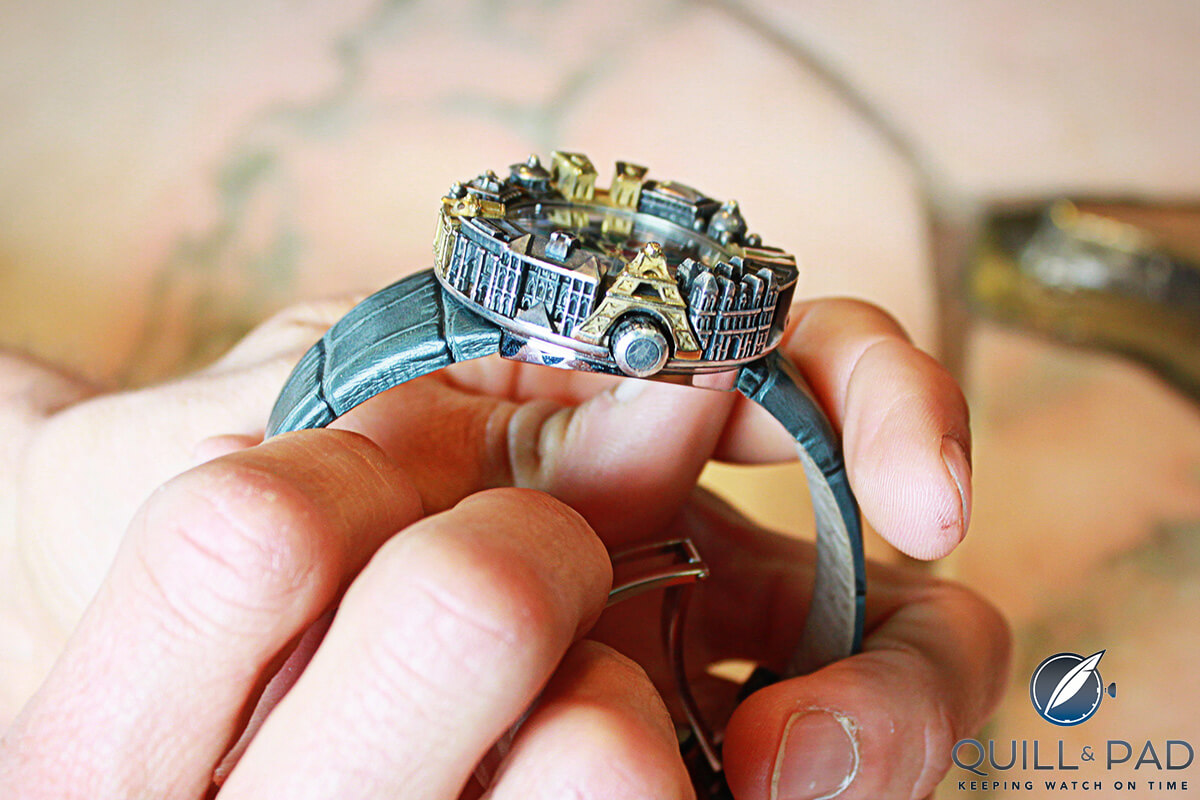
Tournaire bespoke watch with Paris skyline bezel
Gem-setters worked at well-worn benches, the wood of their tables rubbed to a smooth sheen beneath their elbows and arms from lifetimes of dedicated work. A flap of leather hung beneath their legs to catch any gold dust that might be cut or sawn off of a piece.
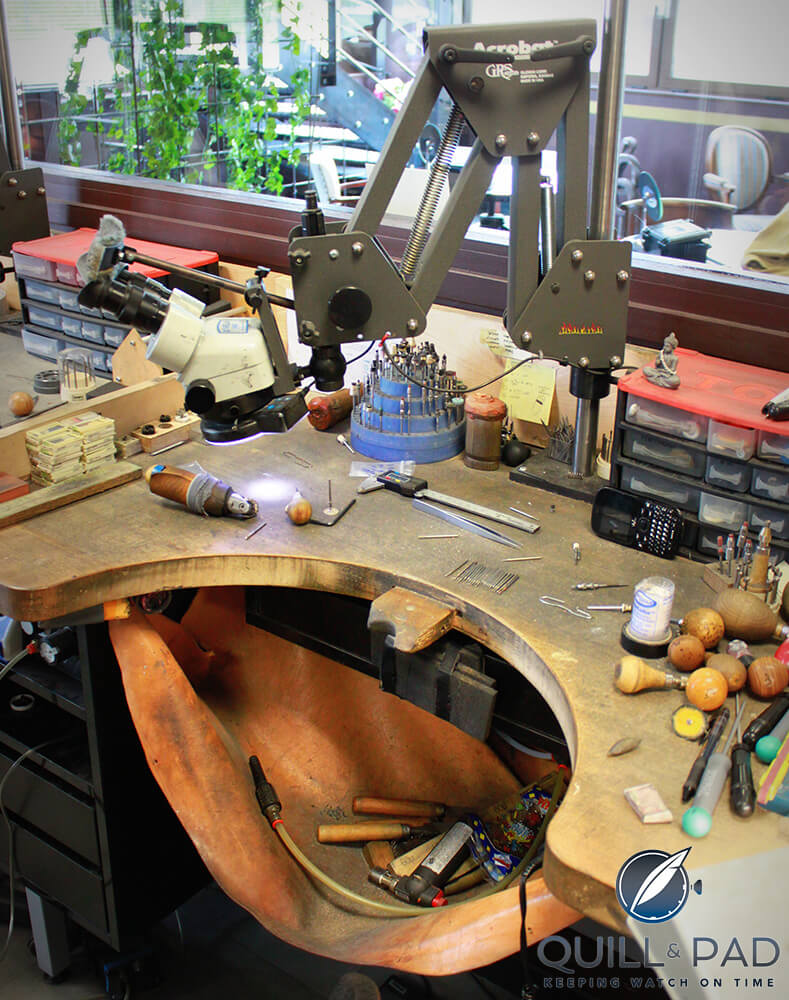
Gem-setter’s workbench at Tournaire, Paris
The artisans spoke of the different elements used in their work as if they were old friends. They were familiar with the characteristics of the different gems and metals they worked with and how each metal “liked” or “didn’t like” to be treated.
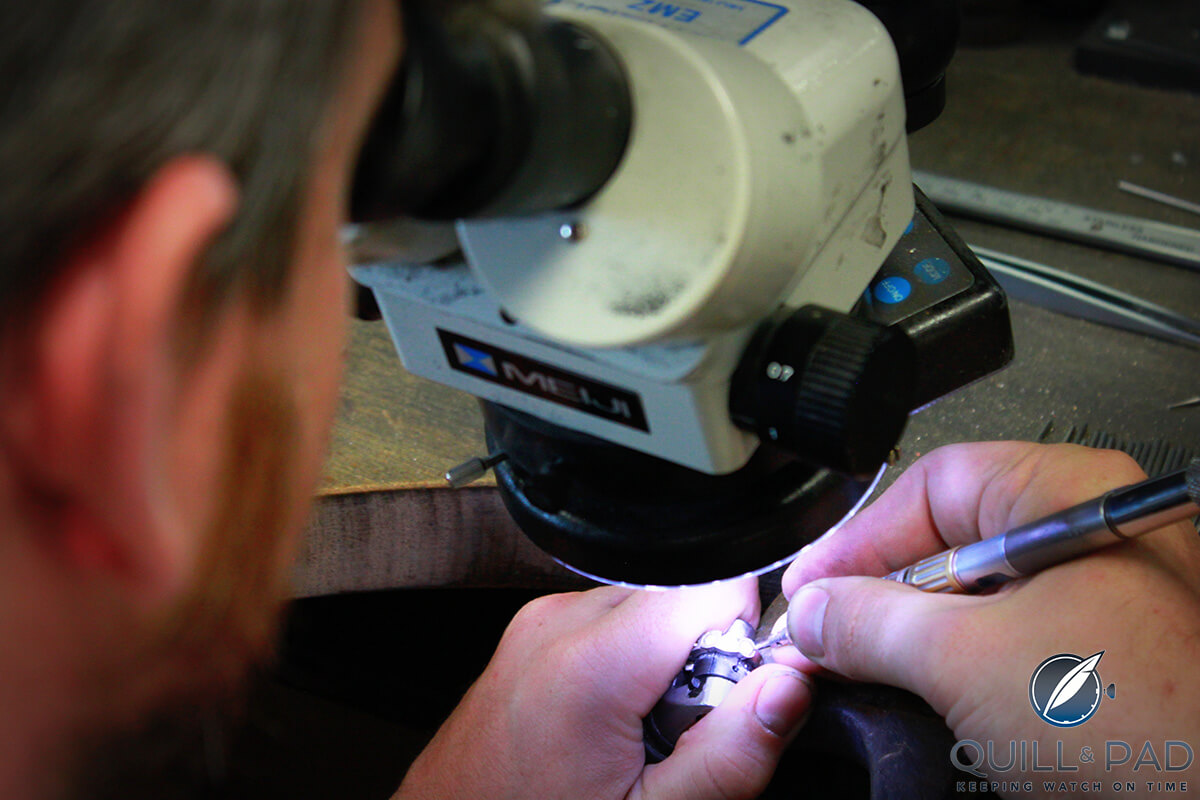
Gem-setting at Tournaire, Paris
In other words, the pieces created in the Tournaire ateliers aren’t just things; it is unspoken but understood that they have a life of their own and a story to tell.
Finding their own road
With young Mathieu leading the charge, Tournaire continues to pave a path in unique jewelry designs. The younger leading figure of this extraordinary maison crafted a design that resonates in many of his own creations: a labyrinth. For him, it symbolizes “finding your own path.”
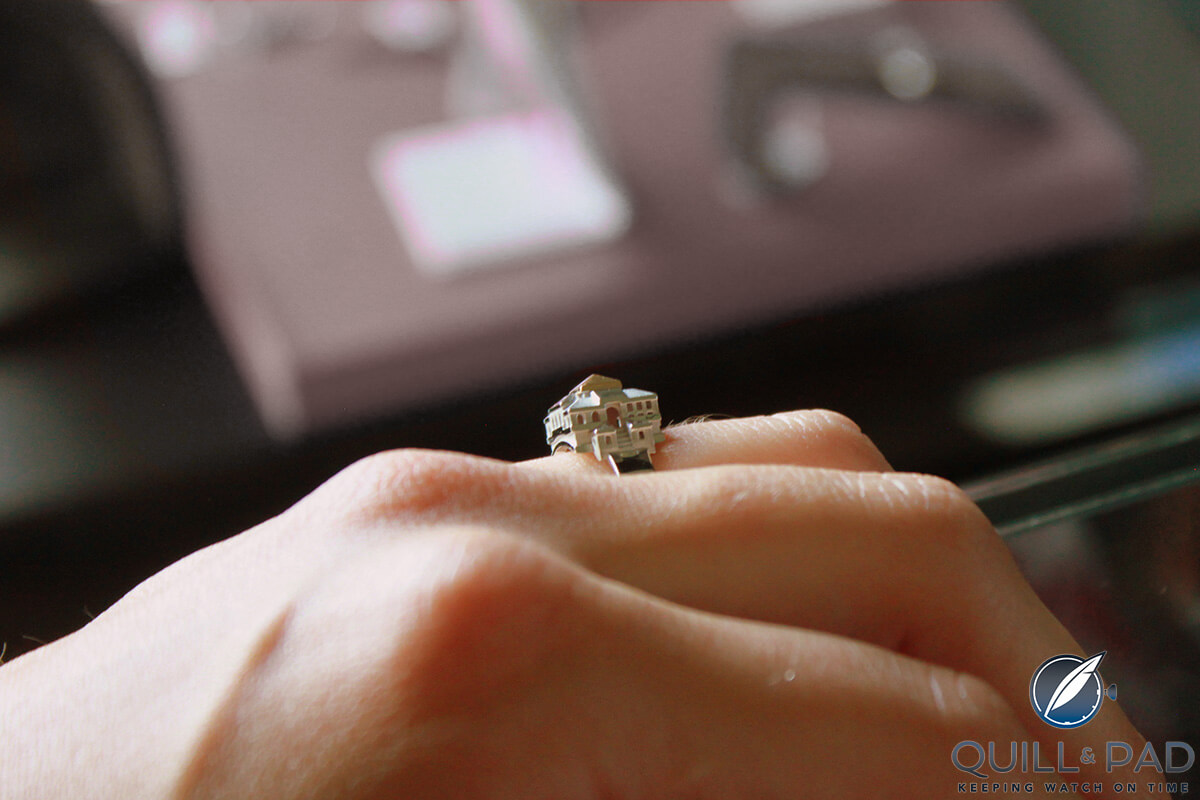
Ring from the Tournaire Architecture collection
Carving out his own destiny would not have been possible without his father, but there is also a bright future ahead for this young artisan on his own.
In Mathieu’s own words, “For us, our pieces are not created with the idea of being flashy. It’s not the amount of gold or diamonds that makes it valuable, rather it is the story and symbolism behind each piece that makes it truly beautiful.”
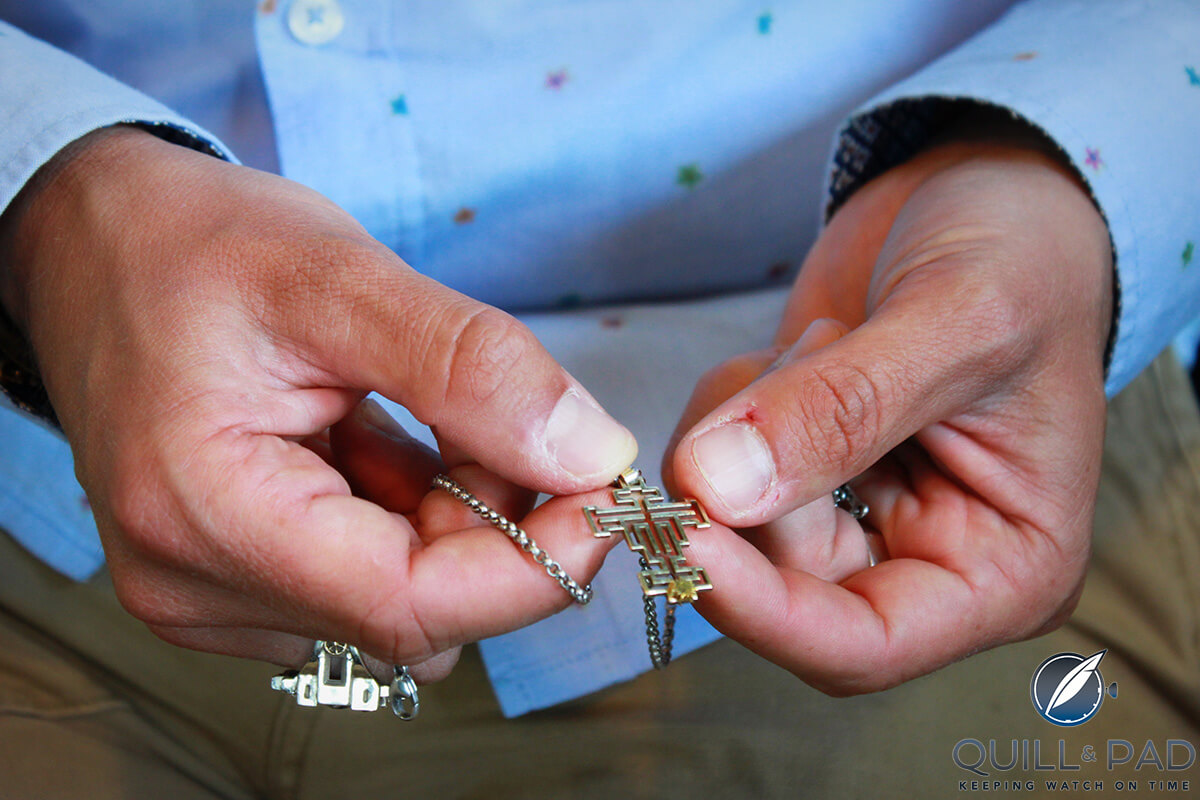
Mathieu Tournaire’s labyrinth cross is a reminder of his daughter
Before we said our goodbyes, we asked Mathieu about the necklace around his neck, a modest gold cross labyrinth with a little sunburst that roamed around between the spaces. He told us it represents his daughter, his very own jewel, which he always carries with him.
For more information about Tournaire and its creations, see www.philippetournaire.com.
Leave a Reply
Want to join the discussion?Feel free to contribute!

WOW!! The Art is well sculptured. Edification of Ideas at its best